What is Affiliate Marketing (and How to Get Started)
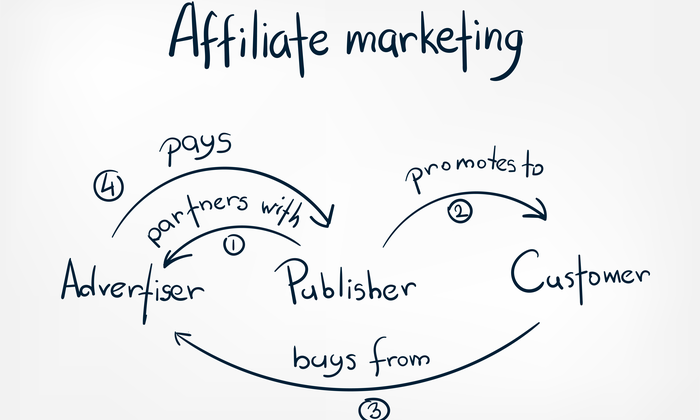
It seems ideal, doesn’t it? You set up a website, add a few affiliate links, and start earning the passive income you’ve always dreamed of.
Many bloggers are earning top dollar this way. For example, Ryan Robinson over at ryrob.com makes mid-five figures every month.
Blogging isn’t the only way of making money from affiliate marketing, though. Microsites, email lists, and video marketing are just a few methods people use to generate an online income.
Although not everyone is making six figures from affiliate marketing, you can use tips and strategies to improve your site and increase your income.
Affiliate marketing is the process of earning money (commissions) every time you promote a company’s products or services and drive a sale. You only get paid every time you drive a sale, just like a commission-only sales representative.
Now before I dive into affiliate marketing, let me tell you why you should care.
Ever since the 4-Hour Workweek was released, everyone seems to have the same goal.
To wake up in the morning, open their laptop, and look at something like this:

That’s the dream, right?
Make money while you sleep.
Ready to find out more? Let’s start with the basics—what it is and who uses it.
What Is Affiliate Marketing?
Affiliate marketing is promoting other people’s products in return for a small commission for each sale. You’ve probably seen headings marked “affiliate link” or “sponsored post” on many of the websites you visit; or maybe you’ve already taken the first step and signed up to an affiliate network.
If you are new to affiliate marketing, let’s cover how it works.
First, find an affiliate program or network you are interested in. Look at the program overview, including the type of products or services, payment methods, and commissions they offer.
If it appeals to you, sign up and wait for confirmation of your acceptance. Then, start creating content, adding the custom links the program provides. Those links track when one of your users makes a purchase, and you’ll earn a small commission.
You can work with individual companies or affiliate networks, where you register and choose the programs that interest you. The programs are generally divided into categories to make selection easier. Once approved, start promoting your affiliate links on your website, in newsletters, on social media, and anywhere else you’re permitted to share links.
The network sends you a payment when you’ve reached the minimum payment level. Payment methods vary, and usually include PayPal, bank transfers, and checks.
Let’s take a more in-depth look at the parts of a successful affiliate marketing system.
The Merchant
Sometimes also known as the creator, the seller, the brand, the retailer, or the vendor. This is the party that creates the product. It can be a big company, like Dyson, who produces vacuum cleaners.
Or, it can be a single individual like Mariah Coz, who sells online courses to female entrepreneurs.
From solo entrepreneurs to startups to massive Fortune 500 companies, anyone could be the merchant behind an affiliate marketing program. They don’t even have to be actively involved. They just have to have a product to sell.
The Affiliate Marketers
This party is sometimes also known as the publisher. Affiliates can also range from single individuals to entire companies. An affiliate marketing business can produce a few hundred dollars in commissions each month or tens of millions of dollars.
It’s where the marketing happens. An affiliate promotes one or multiple affiliate products and tries to attract and convince potential customers of the value of the merchant’s product so that they end up buying it.
This can be achieved by running a review blog of the merchant’s products. For example:
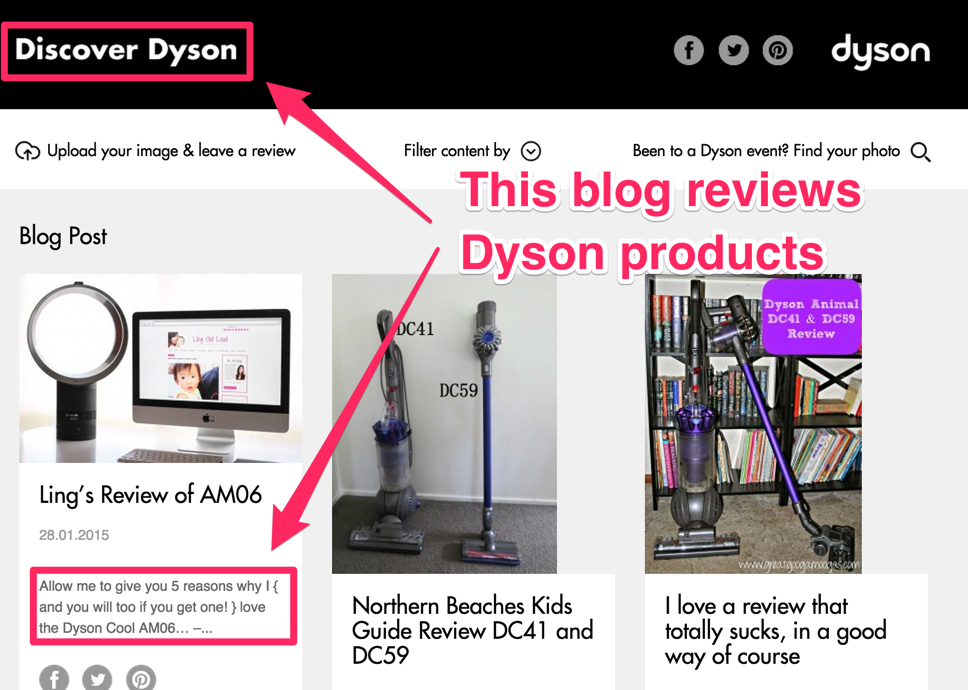
It could also be an entire site dedicated to finding cool products related to certain topic and promoting those affiliate products.
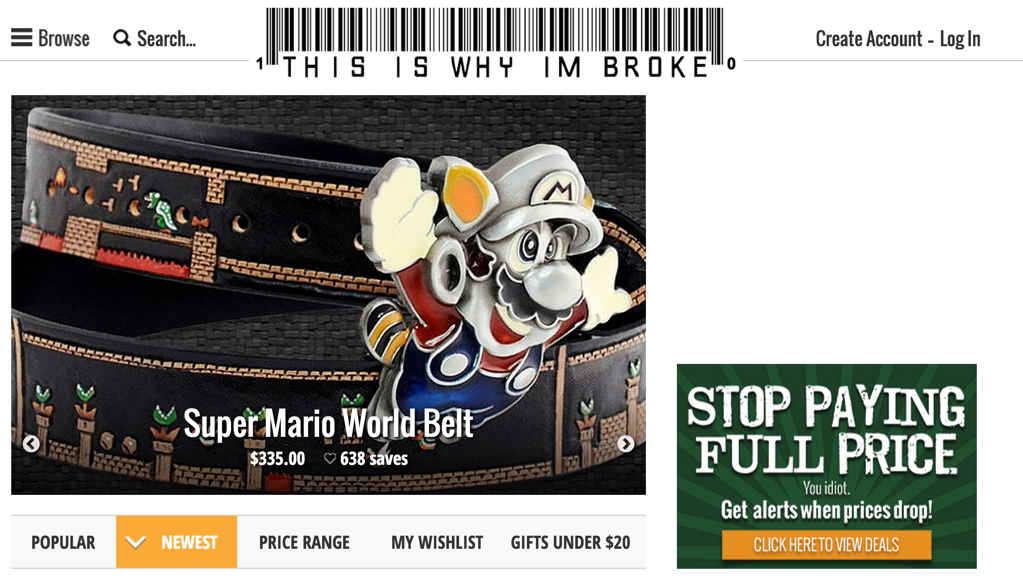
The Consumer
The customer or consumer makes the affiliate system go ’round. Without sales, there aren’t any commissions to hand out and no revenue to be shared.
The affiliate will try to market to the consumer on whatever channel they see fit, whether that’s a social network, digital billboards or through a search engine using content marketing on a blog.
The consumer needs to knows they are part of an affiliate marketing system. Usually a short disclaimer like “If you purchase items on this site, I may earn a small commission. Thanks for supporting our work.” is fine.
The consumer will not typically pay a higher price to the affiliate marketer, as the cost of the affiliate network is already included in the retail price.
The Affiliate Network
Only some consider the network part of the affiliate marketing equation. However, I believe that an affiliate marketing guide needs to include networks, because, in many cases, a network works as an intermediary between the affiliate and the merchant.
While you could technically promote someone else’s course and arrange a direct revenue share with them, letting a network such as ClickBank or Commission Junction handle the payment and product delivery puts a more serious note on your affiliate marketing.
Sometimes, affiliates have to go through an affiliate network to even be able to promote the product. For example, this happens if the merchant only manages their affiliate program on that network.
The affiliate network then also serves as a database of lots of products, out of which the affiliate marketer can choose which to promote.
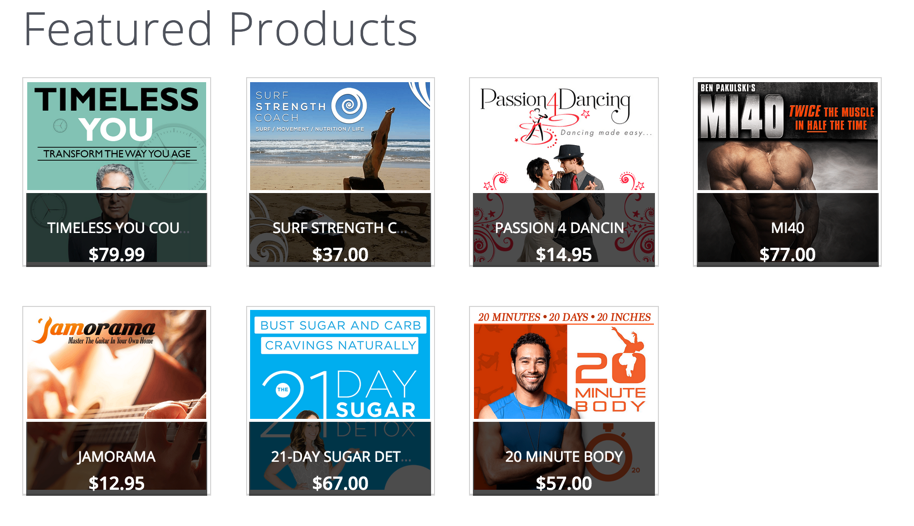
Clickbank is an example of an affiliate network.
In the case of promoting consumer products, like tools, books, toys and household items, the biggest affiliate network, by far, is Amazon.
Their Amazon Associates affiliate program lets you promote any item that is sold on their platform.
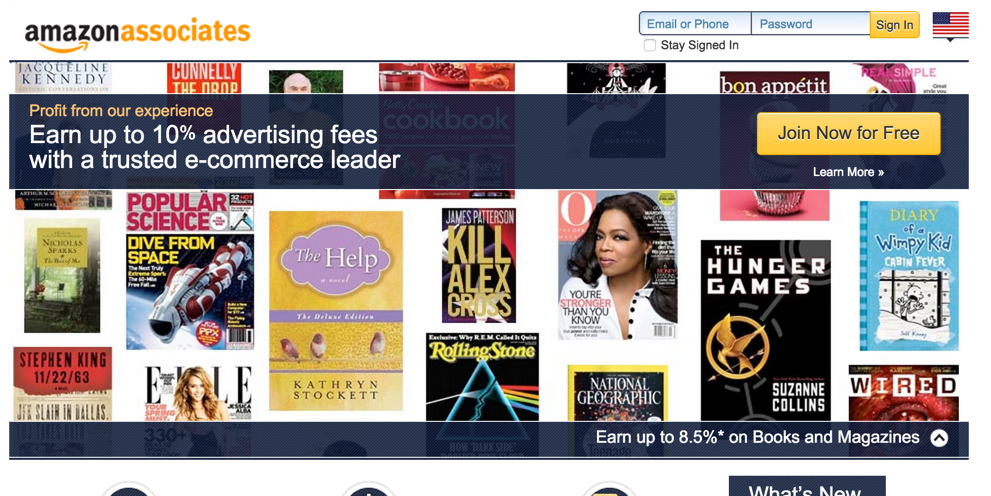
Anyone can sign up and then generate a custom affiliate link to Amazon products. If someone purchases through your link, you earn a small commission.
With the basic terms clarified, let’s get an overview of how you can best get started with building your affiliate marketing business.
As I said, there are basically two sides of the affiliate marketing equation to choose from, assuming you are not going to build an affiliate network like Commission Junction.
You can become a merchant and have others promote your product, in exchange for giving them a commission from the sales that they make.
Or, you can become an affiliate marketer for several products and market those to consumers, in order to make money.
While most people start by taking the affiliate route and it definitely is the easier path to take, building enough traffic to make a meaningful income just from affiliate sales isn’t quick or easy.
That’s why I’ll walk you through the four basic steps to get started on both sides of the affiliate marketing industry.
How to Become an Affiliate Merchant
If you want to become an affiliate program merchant and then make money by having affiliates sell your product, here are the steps to follow.
First, you need to have a product idea. I’ll show you a few ways to generate those ideas, based off what’s already popular, in the next section.
Second, you have to validate your idea. You could just go ahead and build your idea. What if people don’t even want it? An idea is only good if people want it to come to life.
Third, you have to create the product. Since creating a physical product usually comes with huge investment and risks, I’ll only show you ways to create digital products. These are the best place to get started since they typically only require your time and little or no money.
Also, once your product is created and released, you need to find affiliates to promote your product — this is where affiliate networks can help.
Step 1: Coming Up with an Affiliate Product Idea
If you want to make money with an affiliate marketing business, you can’t be attached to your idea.
Instead, just look at what products and services are already out there. Consider how you can improve upon them, by delivering something that solves the problems with those products.
You can, of course, always, choose a topic you’re interested or involved in.
Imagine you’re a stay at home parent, for a second.
Maybe you want to create a product that makes household chores easier. For example, you could look for a vacuum robot to get some ideas.
This is the first Google result, a review site for robot vacuums:
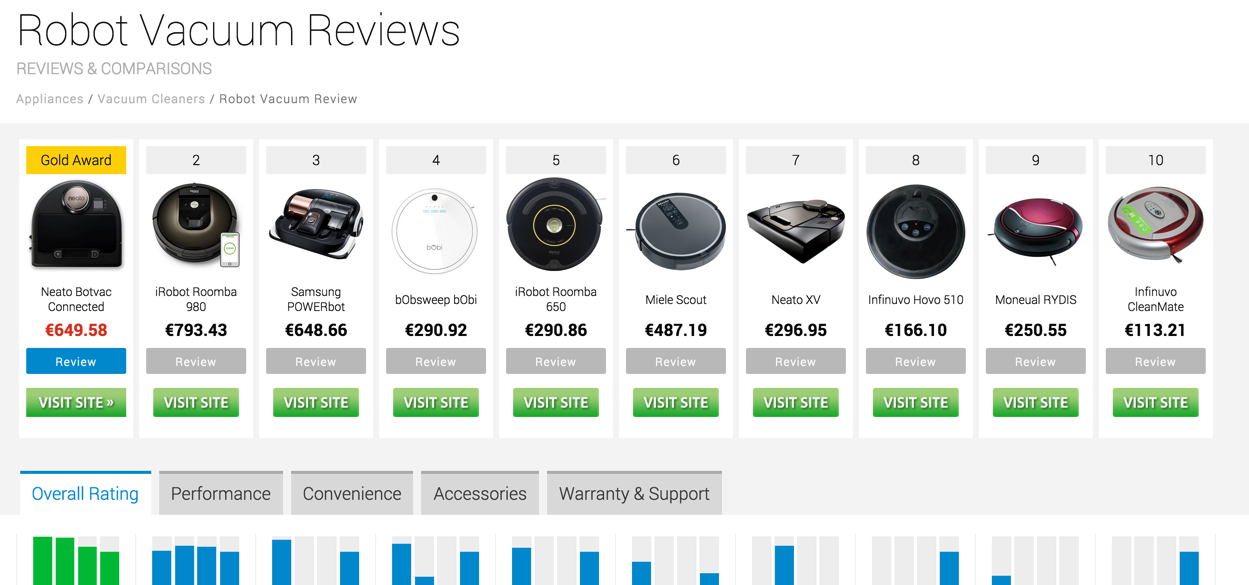
Perfect!
Just by looking at the individual reviews, you can instantly see what’s bad about these robots and what you could potentially improve upon.
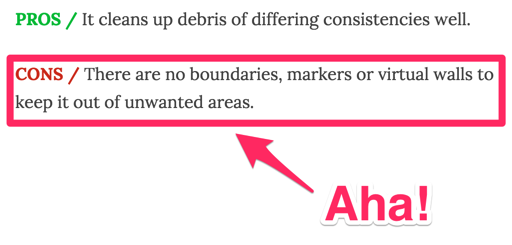
No virtual walls that tell the robot where to go and where not to go is a common problem, mentioned in six out of the ten reviews of the top products!
Lack of a remote control was also a common ‘con.’
However, the virtual wall came up again and again and again.

Therefore, a great idea could be to develop a virtual wall that works for all vacuum robots.
I imagine you could sell anyone who owns a vacuum robot a system that works as a virtual wall, so their robot only cleans a predefined space.
Now that’s a valid idea!
This works for anything, I’ll show you.
Another way to do research is to use a tool called Buzzsumo, which shows you what’s popular, based on social shares.
Even if you’re into building sandcastles, you can instantly see what content has been recently popular.
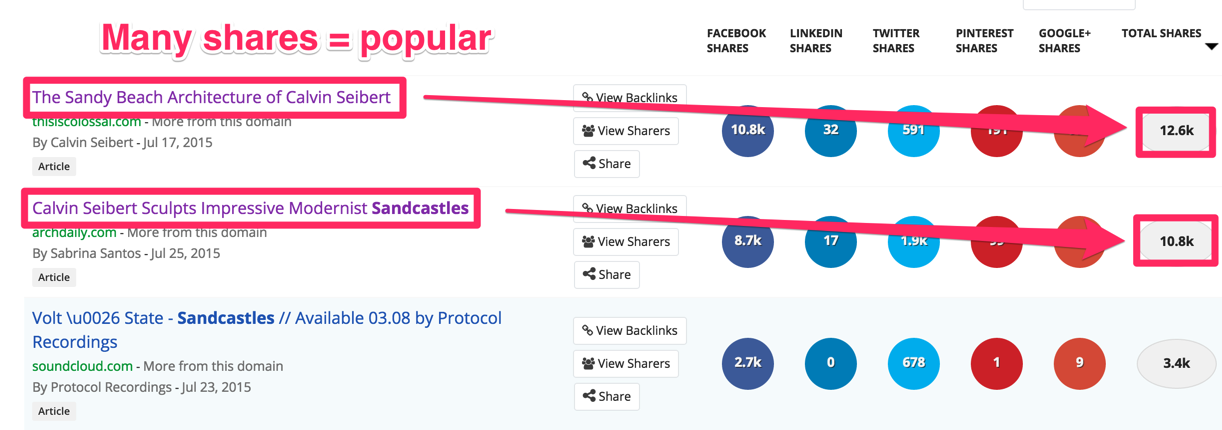
If you go on YouTube and search for ‘build a sandcastle,’ you’ll find thousands of results.
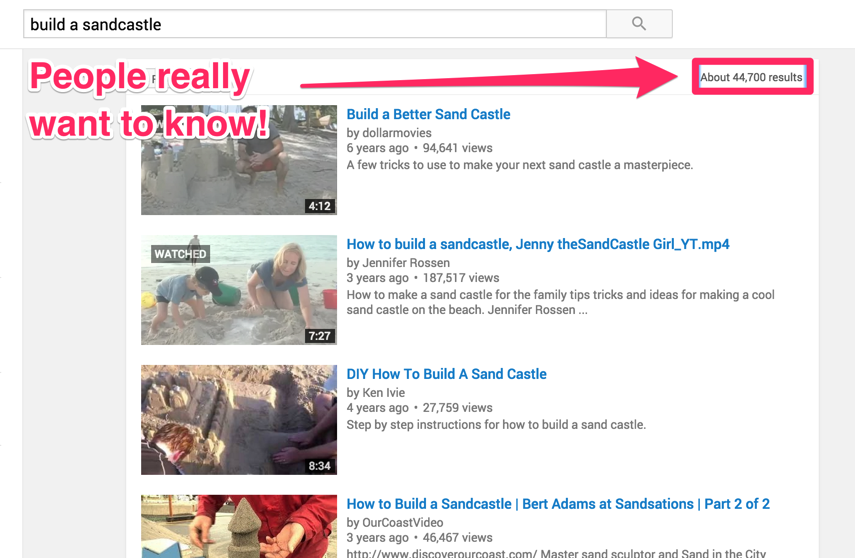
Apparently, people really want to know how to build cool sandcastles. So, what could you do?
Record a series of videos where you show people, step-by-step, how to build 5 very specific, epic sandcastles.
Or, you can do a write-up of all of the tools you need to build epic sandcastles.
You could even come up with some forms or stencils that people can use to make building epic sandcastles a whole lot easier.
The question is…will people pay for it?
Step 2: Validate Your Idea
In order to not end up doing a great series of sandcastle videos that no one wants to buy, you have to first validate your idea.
How do you do that?
Simple: You ask people to pay you for it.
How do you find these people? Easy.
Take the URL from one of the sandcastle posts on Buzzsumo and plug it into a tool like Keyhole.
They’ll give you a list people who tweeted a link or about specific topics.
You can then directly tell them about your idea, by hitting the reply button…
Make sure to ask them whether or not they would buy your idea — not just if they like it.
Anyone will say that they like something just to be nice.
If they respond with a yes, you need to directly follow up with an ask to buy.
Saying they will spend money is not the same as spending it.
When people are interested in your product, give them a chance to buy. You can simply use PayPal and say you’re going to build it if you get a certain amount of orders.
Once you cross your threshold and make sure that people want it, you can start creating the product.
Step 3: Create the Product
There are a ton of steps to follow for creating a product and this isn’t an entrepreneurship guide, but I want to point you to some good starters.
I’m only give you resources for starting digital products, because I don’t want you to waste precious time and money on creating a physical product on your first try 🙂
Online courses:
- How to launch an online course and make $220,750 in 10 days
- How To Create & Sell Your Online Course The Right Way
- SPI 136: How to Build an Online Course that Sells with David Siteman Garland
Ebooks:
- The Ultimate Guide to Publishing Your eBook on Amazon’s Kindle Platform
- How to (Really) Make $1,000,000 Selling E-Books – Real-World Case Studies
- How to Start to Write an eBook and Actually Finish it in 30 Days
Podcast/Audio:
- Podcasting for Beginners: The Complete Guide to Getting Started With Podcasts
- How to Start a Podcast – Pat’s Complete Step-By-Step Podcasting Tutorial
- How To Podcast: The Ultimate Guide to Podcasting
These are good starting points. Creating digital products is a lot easier, since it just takes time and sometimes a little financial investment, but usually not more than a service fee or a one-time price for software.
Once you have the product created and delivered to your initial buyers, it’s time to open up the affiliate network.
Step 4: Finding Affiliate Program Partners
The tech part is the easy thing here.
With tools like Gumroad or Digital Product Delivery, you can easily set up affiliate program partners and allow them to collect commissions.
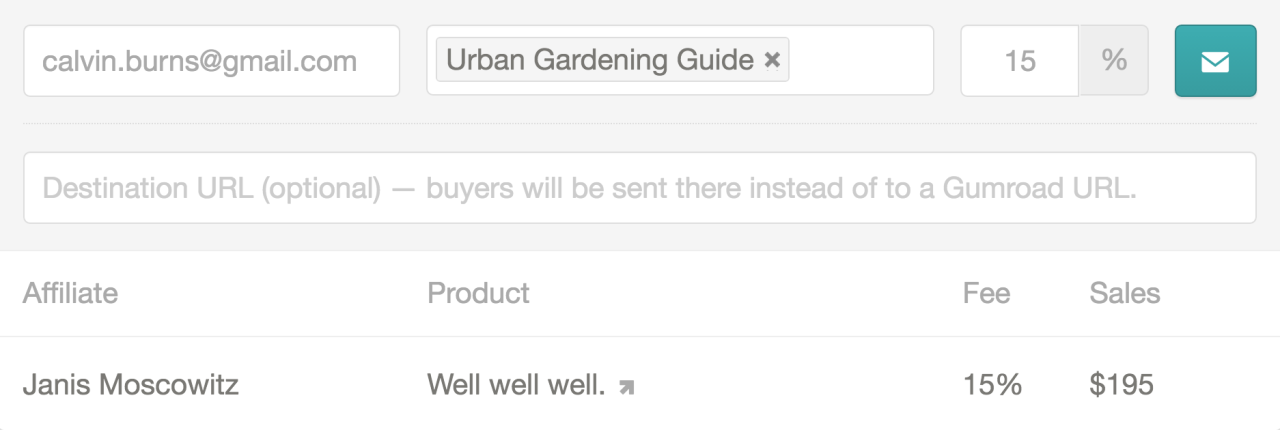
Another great affiliate marketing tool is Everflow. Not only does it help you recruit affiliates, but you can also use it to:
- optimize and structure your affiliate campaigns
- manage and track revenue and spend
- manage and track performance, and optimize campaigns immediately based on data
- automate your processes
- project manage your campaigns and assign tasks
After you selected a platform comes the tough part: finding partners that have an audience who is interested in what you have to sell.
Let’s stick with the sandcastle guide example.
Do you think there’s anyone out there who sells something remotely related?
Actually, there is.
When you enter “learn to build sandcastles,” into a search engine, several sites pop up that sell educational material about it.
Loke SandCastle Lessons, which offers classes on the subject:
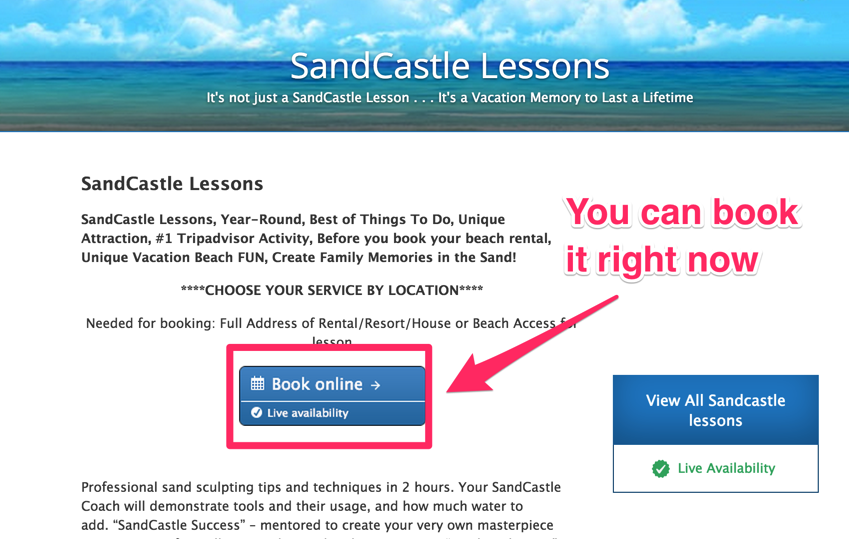
Partnering up with them on a sale together would be an easy pitch because it’s a perfect fit.
The more niche your product is, the easier it will be to pitch to fellow merchants.
You can simply send them an email, introduce yourself and your product and ask them if they want to partner on a sale together, where you’ll share revenue.
Pro tip: Affiliate commissions of 50 percent or higher are very common with digital products because you have no cost of replication. Don’t be greedy here, split the pot evenly and everyone wins.
Googling “toy review blog” also gives plenty of results, where people write toy reviews.

What’s more, lots of YouTube channels review specific categories of toys. If you find one that reviews kids’ toys, they’d probably also be a good fit for your affiliate product.
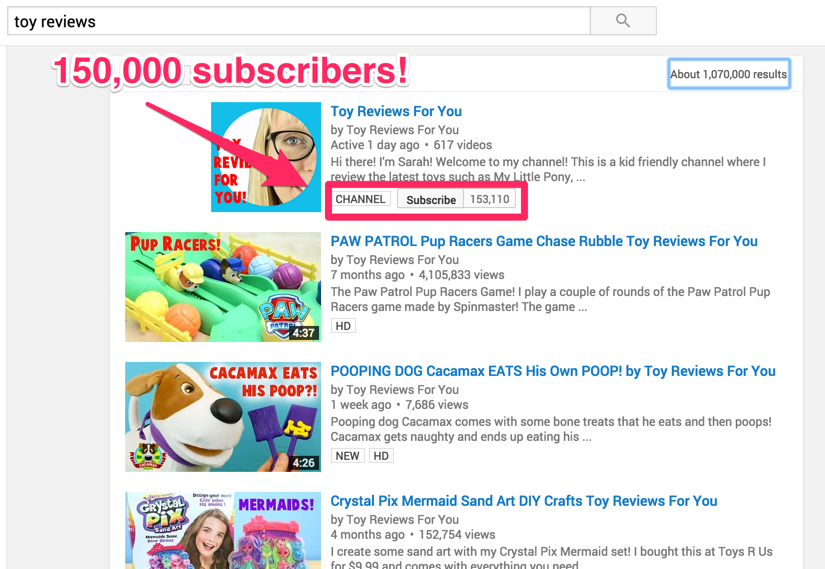
Just try finding one person to partner up with and start your first affiliate promotion. You can adjust commissions and details later, the important part is to get started. Or if you need help, you can always work with an affiliate marketing agency that can help you kick start things.
However, you could also start the journey on the other side of the fence and just become an affiliate yourself.
4 Steps to Become an Online Affiliate Marketer
Similarly to becoming a merchant, there are also four steps to start your journey as an affiliate marketer.
First, you need to start reviewing products in your niche. That can be done on a YouTube channel, on a blog or even just using live streams on Periscope.
Second, you have to collect emails, so you can connect with your audience at any time you want and don’t have to hope for them to see your content.
Third, you can use joint venture webinars to make a lot of sales in a short period of time, while simultaneously growing your email list and creating new content.
Finally, once your affiliate marketing business starts making money, you can scale your growth with pay per click advertising.
Step 1: Review Products in Your Niche
It’s easier to get started as an affiliate because you’re skipping the ‘have an idea’ and ‘creating an idea’ parts of becoming a merchant.
You already use and like plenty of products, so all you have to do get started is to publicly talk about them.
Start by looking at the partners in step 4 for becoming a merchant, because that’s what you’re trying to start in this step.
Any product works.
Really.
Take a look at this guy, who reviews Hot Wheels tracks and cars:
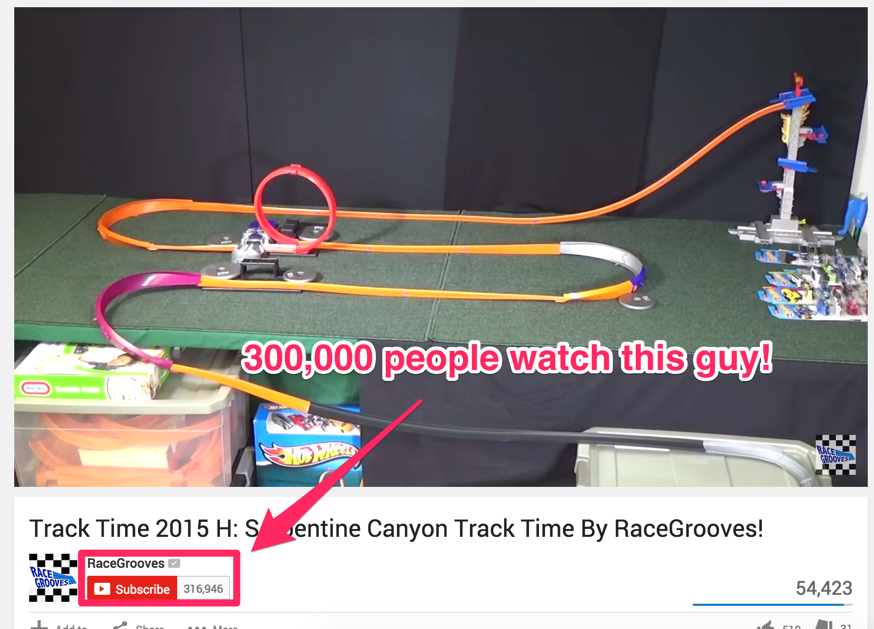
Over 300,000 subscribers for Hot Wheels? I’m sure whatever your niche is, it’s less specific.
If you like reading, review books:
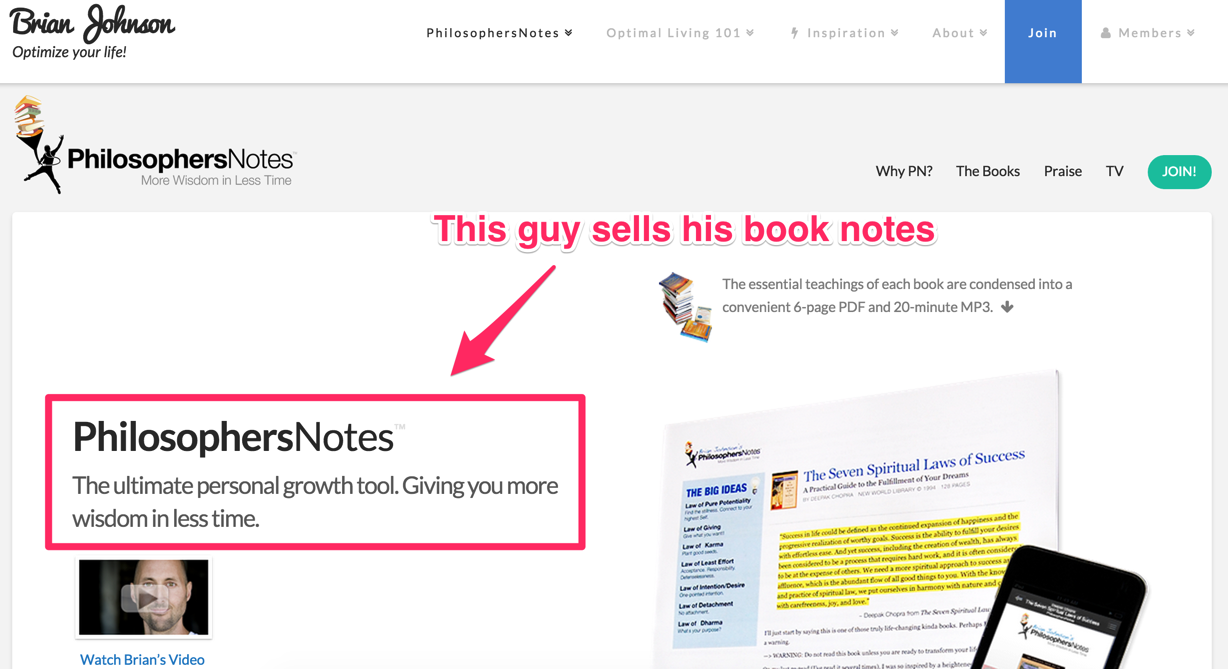
Note: A special kind of review, that usually does really well, is the comparison with a direct competitor.
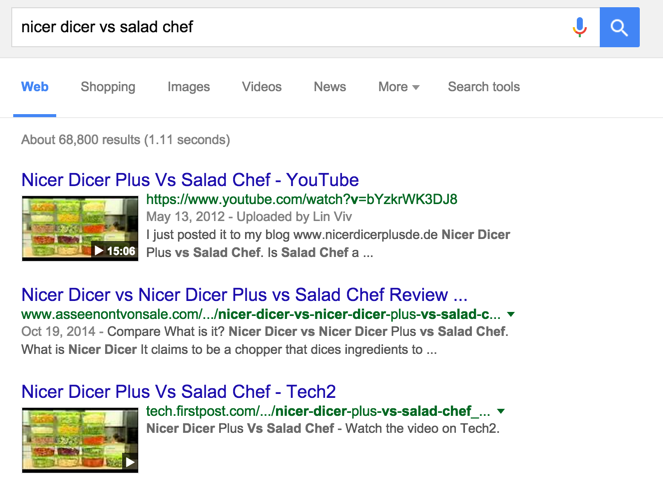
Whatever you’re reviewing, make sure you are honest and even handed.
If your reviews aren’t genuinely helpful, people will sense immediately that you’re just trying to make a quick buck.
As Pat Flynn points out, in his affiliate marketing guide, involved affiliate marketing is by far the most profitable, because you can relate to the product, instead of just promoting something that might make you a lot of cash.
When you don’t even know the product, how can you credibly promote it?
Note: This is a little different for consumer products than it is for online courses or books created by individuals. If you’ve known a person for a long time and trust them and know their work is great, then that’s a different thing.
When you write reviews on your blog, you can use an affiliate link to link to the products you promote.
You can recognize them on other blogs by the long “/ref…” tail, at the end of the regular link.

This is usually the first step to start making commissions.
Simply sign up to Amazon Associates and you can then proceed to get your own affiliate link to any product on Amazon.
Just go to the product page and click on “Share affiliate link.” You’ll get a link that’ll give you a commission if people purchase through it.

However, if you only rely on people using the affiliate links in your reviews, you need lots of traffic to start making serious money.
If you can contact your audience directly, you can market to them whenever you like, not just when they come to your website.
This is where step two comes in.
Step 2: Build an Email List of Your Prospects
Email is still one of the best marketing channels today, so don’t miss out on it.
I’ll show you a few super easy ways to collect email addresses from your website visitors.
The first is Hello Bar
Hello Bar puts a call to action on top of your website. Whenever someone visits your website, they’ll see this bar at the top.
You can offer them an ebook (maybe bundle together your 3 best product reviews) or a special review video.
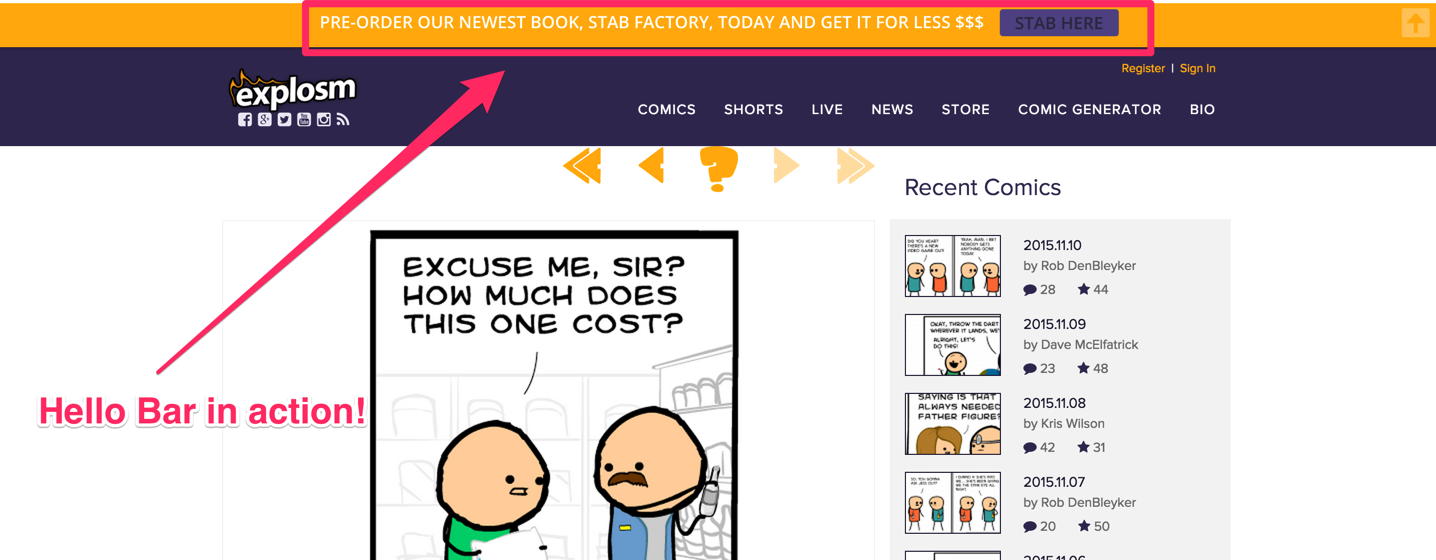
Once they click on your Hello Bar, you can redirect people to the page where they can enter their email in exchange for the content.
You can also use Hello Bar to create an exit gate. This is a popup that will lay over the screen when visitors are about to leave your website.
It is triggered by their mouse moving to the top area of the browser.
I use it to get more Facebook likes on Quick Sprout:
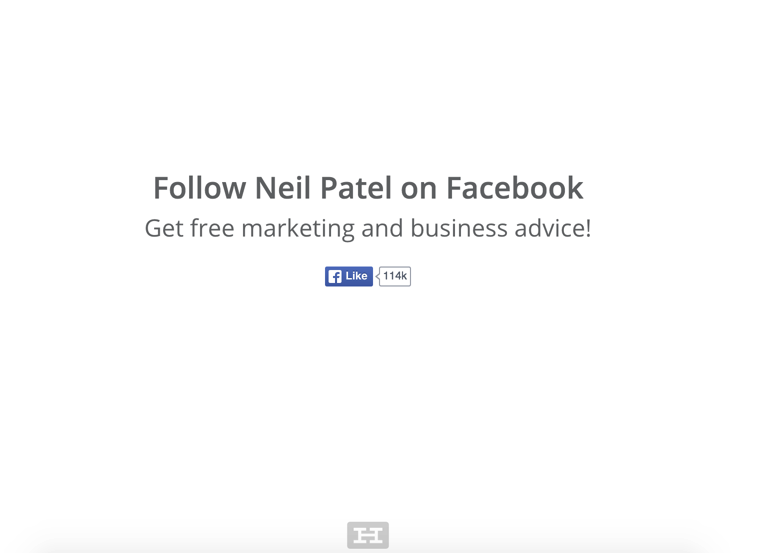
You can also redirect people to your lead magnet and get their email address this way.
Just don’t over do it.
If you give your visitors 20 things to do, it’s unlikely that they’ll do anything at all.
Just have one call to action in your sidebar. Again, it should offer people something in exchange for their email address.
Since you’re collecting email addresses around a very specific topic, such as finding the best straightening iron, juice maker, mini-oven, etc., you don’t need a lot of them to make the email list worth your time.
Even with less than 500 people on your list, you can create significant sales.
Just make sure to keep your audience engaged, by sending them regular updates, ideally once a week.
Don’t make it all sales. Just let them know when you have a new review up.
For example, I email out every single post that we do on Quick Sprout with a very simple description of what it’s about:
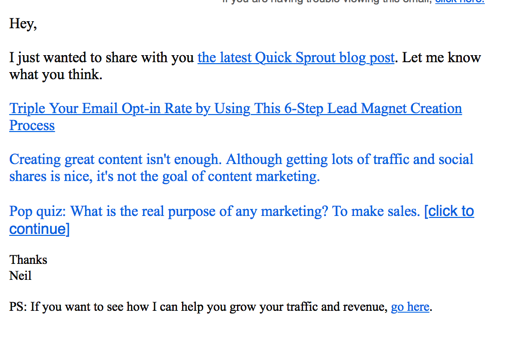
Every now and then, send them a specific call to action to buy a product. Perhaps you just found a new favorite in the latest review and think it’s really great.
You can update your audience on your change of mind, the reasons why and recommend that they switch to that product also.
Step 3: Educate Your Audience With Webinars
Webinars are awesome.
Imagine you want to buy a new fridge.
What makes you want to buy a fridge more:
- Reading a review on a blog
- Seeing a live presentation of a fridge in action
Number two, of course!
Using a tool like LeadPages, you can create a simple landing page where people can sign up for your webinar.
Promote your webinar on social media for a week in advance and get people to sign up.
Webinars are great to engage with your audience one on one, show them the product you’re promoting live and answer any questions that they might have.
You can:
- present the product’s features
- show different use cases of the product
- talk about its benefits and drawbacks
- tell people your personal history with the product
- help your audience get the most out of it
Imagine how fired up your audience will get when they see all of the cool things your product can help them do.
Pointing to your affiliate link and sharing it at the end of the webinar is a soft sell and comes naturally since you just spent an hour talking about the product.
It won’t feel forced and your consumers can still take all of the time that they want to make up their mind on whether they’ll actually buy.
Pro tip: Can you get your merchant to give you a special deal for your audience? If you promise to get their product in front of a couple hundred people, they’ll often happily give you a discount or special bundle to further incentivize people to buy.
Step 4: Grow Your Business with PPC Advertising
Once your affiliate marketing business starts to picks up steam, you can start thinking about paid advertising.
I’m not going to show you how to do it here, since I recently published a guide on both Facebook Ads, as well as Google ads, but remember: only do this once you have a way of making back your money.
Conversions are all that matters here.
You can use PPC advertising to:
- get people to sign up for your webinar
- grow your email list
- make more sales
For example, if you Google “learn leadpages,” you can see that LeadPages themselves are advertising for this keyword, running Google ads, promoting their weekly live webinar.
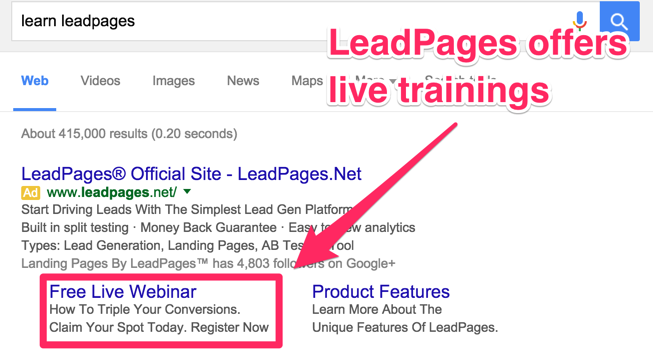
So, keywords related to learning about your product or topic would be a good start.
You can also target your competition. For example, right under the LeadPages ad, there’s an ad from Unbounce.

These guys also provide a software for creating landing pages, so it’s an easy way for them to get in front of someone else’s audience.
Now, while you could try to target people who are just trying to find a review of your product, you’d probably be better off improving your SEO.
The percentage of people who buy straight through your link after reading a review is naturally low, so imagine paying for these reads. Depending on the product price, you only get a few dollars or even cents per sale, so the margin you can spend on ads is not very big.
In most cases, your best off promoting sign-ups to your email list.
As a matter of fact, getting people to sign up for a webinar with ads is the best way to go.

You will win in three ways:
- They’ll be on your email list and you can contact them again at any time
- There’s a chance that they’ll attend your live webinar and buy the product
- You can put them on an autoresponder email sequence that encourages them to buy
For example, John Lee Dumas, from Entrepreneur On Fire, often runs webinars and puts them right on his homepage.
As soon as you opt into the webinar, he also starts sending you a series of automated emails.
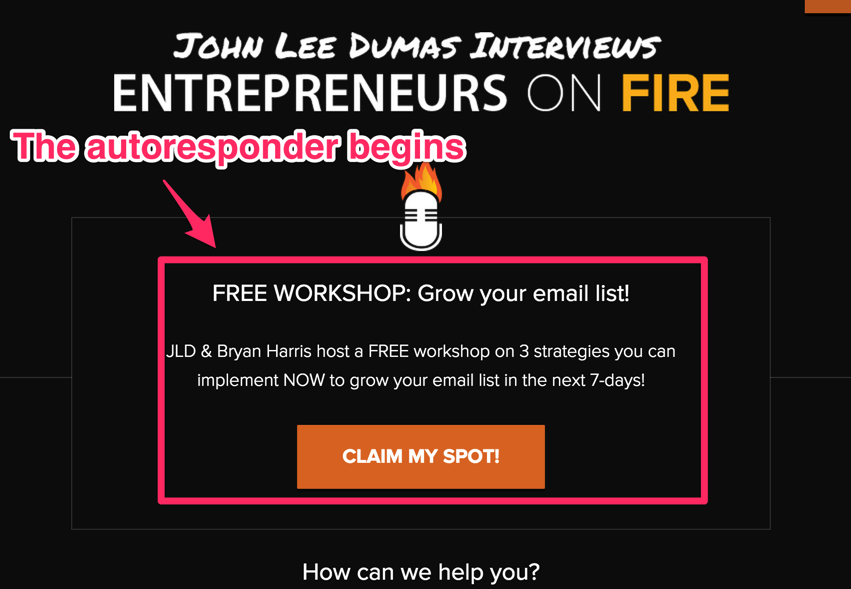
On those emails, he offers you other courses and free tools, like a webinar course, where you’ll learn how to do webinars to make sales.
If you opt into those, you’ll be sent 10 email lessons over several days. At the end, he invites you to buy a more extensive course on webinars.
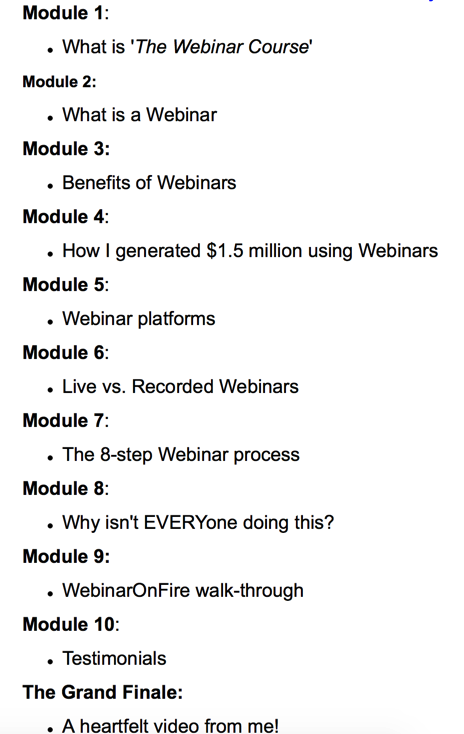
After you’ve already learned a lot about webinars, you’re introduced to his more thorough and detailed course that’ll teach you even more.
He even shows a behind-the-scenes walk-through of the course, so you get a sneak peek.
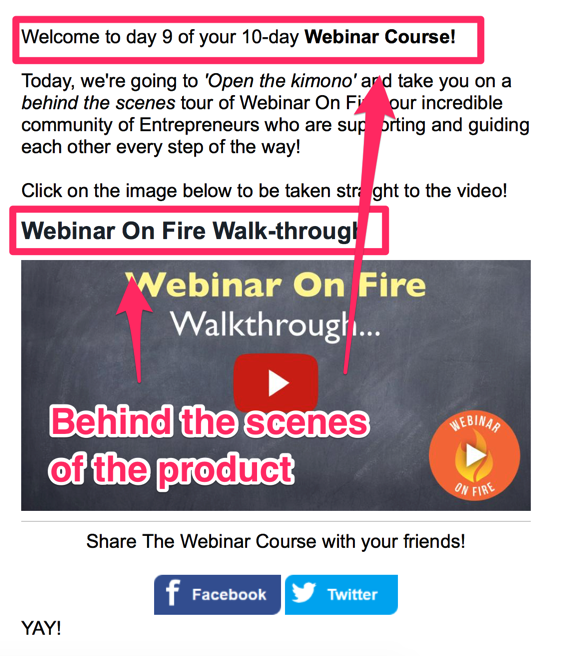
Once he knows how many people will end up buying the full course from the autoresponder series, he can easily calculate how much he can spend on ads to get people to sign up for the webinar or webinar course.
So, with this strategy, you have several chances of getting your consumers to buy your product.
They have a chance to buy after the autoresponder series, on the webinar, and from future emails.
When your sales start coming in from that many sources and begin to grow, that’s when you can really blow up your business with paid advertising by just driving traffic to the sales mechanisms that already work.
The Top 7 Uses of Affiliate Marketing in 2021
Aside from the traditional ways of promoting affiliate marketing links, there are distinctive new trends in recent years. This next section looks at some of these trends and more traditional ways of promoting affiliate links.
1. Influencer Marketing
Influencers are one of the top faces of today’s affiliate marketing, thanks to social media and sites like YouTube.
Celebrities Kim Kardashian, Kylie Jenner, and Selena Gomez are among the world’s top influencers. However, many ordinary people have become famous just because of their influencer status and ability to create engaging content and interact with their audience.
Photographer Murad Osmann, TikTokker Addison Rae, and cleaning expert Mrs. Hinch are examples of top influencers that built their platform from the ground up.
While brands often pay influencers to promote products, it also makes sense for them to share affiliate links with their followers in return for commissions.
If you’re a business with a considerable or passionate audience, then consider influencer marketing.
For instance, on Instagram, you can share and promote your links by:
- Tagging the brand when you’re promoting their product.
- Add links to your bio.
- Use Instagram Stories and IGTV to talk about and promote products.
- Create product comparisons and gift guides to educate your audience.
When you add links, make sure to include a strong CTA to encourage visitors to click like Instagram influencer Ashley Spivey does.
One final tip: choose products that make sense for your brand or niche and only share products you like. Your audience needs to trust you have their best interests in mind.
2. Blogging
Affiliate marketing is often the go-to choice for bloggers wanting to monetize content.
Bloggers generally specialize in a specific niche and share products or services of interest to their audience. For instance, it could be customer management systems, health trackers, or credit cards.
This type of affiliate program works well with niche businesses, and the further you can niche down, the better.
One example is Spencer Haws of Niche Pursuits. Besides his main site, he owns several profitable niche sites. You can see how Haws adds affiliate marketing links in the image below:
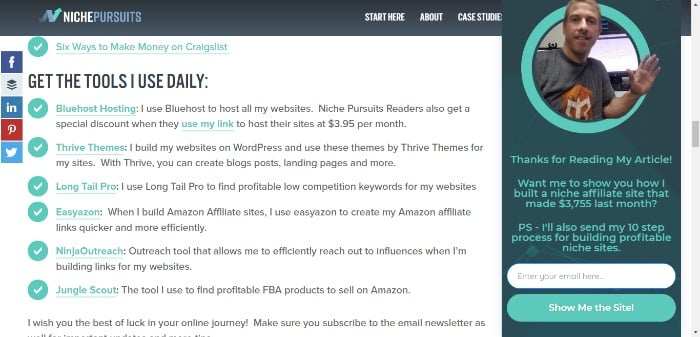
To implement affiliate marketing on your blog, include links in blog posts, or add banners, video clips, even pop-ups. Social and email can also help you share your links.
However, only include links when they’re natural and don’t oversell. If you have a newsletter, share your links through special offers, gift lists, product comparisons.
Finally, concentrate on sharing links that are useful and offer value to your subscribers. Don’t just go for the sale—make sure you provide value first.
3. Referral Links
When you’ve signed up for an affiliate platform, you gain access to a personalized link, known as a referral link.
When visitors to your blog, newsletter, or social media page click on the link and make a purchase, you earn a commission.
For instance, BigCommerce has its own high-paying affiliate program, which pays $1,500 for every enterprise referral.
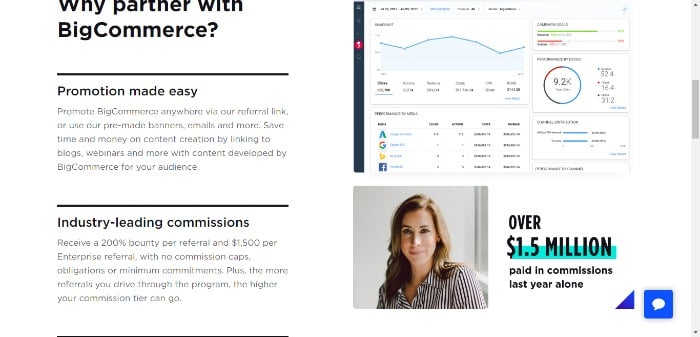
Businesses regularly sending out newsletters or writing blogs/reviews usually find this strategy a good fit. However, you can also use referral links in:
- reviews/tutorials
- resource pages
- some forums
- banners and video content
- blog posts
However you use referral links, make sure your content is useful and your links are contextual and visible.
If you send out content to new subscribers, focus on building customer relationships and trust before adding your links. With social media, it’s not good form to share affiliate links directly, but do share links to your published content with affiliate links.
One final tip, don’t forget the usual standards for creating good content, such as using keywords, including CTAs, and creating clickable titles.
4. Microsites
Microsites or mini-sites are separate from a main website and are often used to target specific audiences. Brands may use them alongside other marketing efforts, like blogging or social media.
A microsite’s format varies from single pages to promote specific products or services to a collection of pages. It may have its own domain or be a sub-domain of the main site.
Typically, brands use microsites to highlight something specific. This could be:
- individual events
- products, campaigns
- content/branded content
However, it’s not just brands using microsites. Regular affiliates create them too. Here is an example.
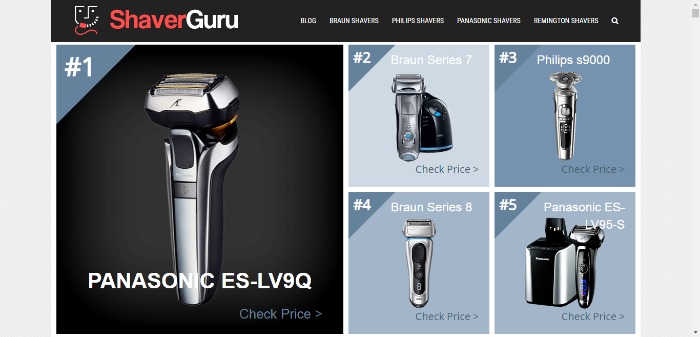
As you’ve likely guessed from its name, ShaverGuru.com creates content around shavers and includes extensive reviews to help buyers find the right razor.
Whether a microsite is appropriate for your purpose depends on a variety of factors, such as:
- The role in your customer journey.
- If you need to keep the site up long term.
- If you’re testing campaigns or keywords.
- You’re an affiliate targeting a specific niche.
To improve your chances of success with microsites, ensure you:
- Write detailed, media-rich content.
- Highlight features and benefits so visitors can read content at a glance.
- Include a mix of content to suit visitors’ preferences— for example, video content.
- Add reviews of products you’ve tried and tested—and be honest.
- Use a combination of products from different affiliate programs for a more comprehensive mix.
- Have a range of products at different price points.
One last piece of advice. Take a tip from ShaverGuru by including a “Check Price On Amazon” hyperlink, taking visitors directly to your affiliate products.
5. Social Media Sites
Affiliate marketers can advertise on Facebook and other social media sites, but you must check your ads comply with the guidelines on each channel.
Sharing your affiliate marketing links on Facebook or similar sites could be ideal for affiliates with a large following or a very niche product.
Some ways of sharing your links include:
- Facebook ads
- personal pages
- groups
- promotional posts
6. Email Lists
Email lists are another popular way to share affiliate links with your audience.
Marketers set up email lists of their registered users through services like MailChimp, AWeber, or a similar service. Usually, they give some incentive for signing up, like a free training session, templates, or an eBook.
The newsletters often include affiliate links, allowing the marketer to make money when a subscriber clicks on a link and makes a purchase.
Marketers with an existing email list and engaged subscribers can benefit from this type of affiliate link promotion, no matter what niche they are in.
This method is suitable when you already have a list or share valuable content with your audience, such as training and tips. Time-limited and exclusive offers from affiliate programs are effective, too.
For example, Digitalmarketer.com uses this strategy, promoting both its own and affiliate marketing products.
7. Create Videos
People don’t just like video content. They love it. Just look at YouTube and its 2.1 billion active users.
Social media sites like Facebook, Instagram, and TikTok are perfect for sharing video content, too.
Video content is easily consumable for busy people and perfect for showing people how they can use a product, how it benefits them, and for highlighting the pros and cons.
The usual best practice is adding affiliate products, pinning them underneath the video on YouTube, adding them to your bio, and being active on your community page, like the gaming product channel Worth a Buy.
Consider using this approach to instill confidence in your consumers and if video demonstrations help illustrate your product’s benefits.
Affiliate Marketing Mistakes and Strategies to Avoid
Though many people are successful with affiliate marketing, there can be a dark side, too.
As with any other business that involves making money, affiliate marketing is the target of various types of fraud, like cookie stuffing or dropping. However, there are other practices to steer clear of, including:
- Creating poor quality content: Gone are the days when you can produce keyword-loaded content and dominate Google. Instead, write quality content and add value to each article.
- Using the “hard sell” approach: Concentrate on relationship-building rather than the direct sales approach. Once a customer trusts you, they’re more prone to buy what you recommend.
- Failing to check the legitimacy of products: That health product may sound impressive and pay high commissions, but does it do what it claims? Choose your products carefully and read reviews online.
- Misleading buyers: It should go without saying, but the lure of commissions can cause some affiliates to misrepresent the benefits of products. By making bold claims, you may get more click-throughs, but it’s unethical and could also be illegal.
As an affiliate marketer, your reputation is everything. If your audience doesn’t trust or believe you, you won’t earn any income. Focus on your audience first and foremost.
How to Track Affiliate Marketing Success
How can you tell if your marketing efforts are working? By tracking metrics.
Start with your affiliate programs dashboard, and see what this tells you. Affiliates using ad programs like Google, Facebook, or Amazon can also use their dashboards to monitor stats for individual channels.
There are also affiliate marketing tools that help track performance, gather analytics, and provide competitor data.
Here are the key affiliate metrics to pay attention to:
- clickthroughs
- ad spend
- ROI
- conversion rates
- net monthly sales
- overall revenue
These metrics will tell you how often people click on your links and how often they buy. Pay attention to what type of content is most effective at driving sales and create more of that type of content.
How to Pick the Right Affiliate Marketing Strategy for Your Business in 2021
Affiliate marketing is a viable monetization method for any business, but the success of your campaign relies on choosing the right strategy. Here’s how to pick the right affiliate marketing strategy for your business.
- Ensure the strategy works for your audience
Do they hang out on social media? On forums? Do they search Google looking for answers? Know where your potential customers are and target them there.
- Understanding the kind of content your audience responds to
What gets them clicking to find out more or sign up for a product?
- Which offers work best for your particular crowd?
Is it free gifts? Competitions? Discounts? The right offers can make or break your affiliate marketing campaigns.
- Use A/B testing
Compare the results and use this data to refine your affiliate strategy.
- Understand your customers’ pain points
Address those issues with detailed content and relevant products.
FAQs About Affiliate Marketing in 2021
Begin by looking at affiliate marketing networks in your niche. Compare the types of products, commissions, and payment methods.
Look at the tools and products you already use. Hosting companies and marketing tools often have affiliate programs.
Another way is to look for well-known sites in your niche and see if they have an affiliate program. Or just search for “affiliates + your niche” and go through the results.
1. First up, decide on your platform. You don’t need to be a blog or newsletter, although some programs have restrictions.
2. Choose products to promote that are of interest to your audience.
3. Read the terms and conditions and apply for the affiliate program.
4. Add your links to blog posts, newsletters, long-form content, underneath your videos on YouTube and social media.
5. Finally, don’t forget to mention the link your sharing is for an affiliate product, and you’re receiving a commission.
Wherever you can link affiliate products naturally—for instance, if you review pet products, add a direct link so your readers can click through and make a purchase.
Or send out a list of the best presents for pets in the run-up to holidays and share it in a newsletter or as a YouTube video review with your affiliate links underneath.
Affiliate marketing is the process of earning income every time you promote someone elses products or services. If you generate a sale for the company, you get paid. If you don’t generate a sale, you do not get paid.
Affiliate income is not consistent. You’ll look at income on an annual basis instead of monthly. A decent affiliate can make anywhere from $10,000 a year to $400,000. A super affiliate can make upwards of $1,500,000 a year.
Affiliate Marketing Conclusion
Affiliate marketing is a straightforward way to monetize your content and build an online income.
As times change, affiliate marketing is evolving. Once blogging and email lists were the main ways to share affiliate links, but social media now means influencers are earning considerable income promoting affiliate products.
Whichever method you choose, make sure the products you share are relevant to your audience, and steer clear of any shady practices.

Comments
Post a Comment